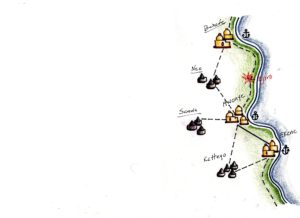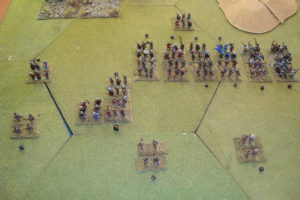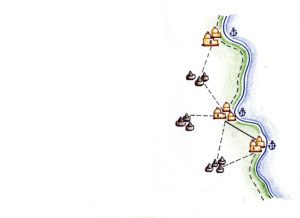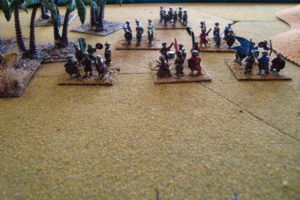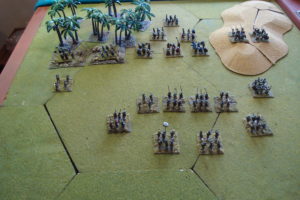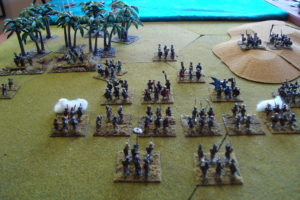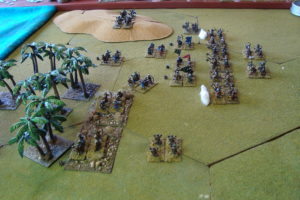Had a fun session with Tim this past weekend. Full of fumbling and stumbling.
As discussed in an earlier post, this is a highly regarded game, with beautiful components. And, as also discussed, for two old hex-and-counter Grognards, it promised to be a new experience, and not the type of card-driven game (Paths of Glory, Pursuit of Glory, Wilderness War, Wellington) we were used to playing.
This will be more an overview of the process, rather than a turn by turn narrative of the game we played. I was so involved in figuring the damn thing out, that coherent recall much less thoughtful strategy was well beyond my capabilities.
First off, we really needed a picture of what the map board should look like when set up. We messed up on where to put available cubes, what cubes to use as markers, and what counters go where. It’s a new take on “idiot rules”, we need rules crafted for idiots.
The first difference we noticed between this and our previous card driven experiences was that each faction (USA, South Vietnam, Viet Cong, North Vietnam) cannot do something with each card. Only two factions can play a card, and only one can play the card as an event. Also, not only is the card in play turned up from the play deck, but also the next card to be played. This forces players to anticipate how to react with two cards, not just one.
The deck itself is constructed differently. In many games deck events and options are predicated on period of the conflict, or the play of a major event triggers the inclusion of more cards. In FITL, the very large deck is initially split into six decks of twelve cards each. A coup card is then shuffled into each deck. Play commences with one deck, and after a Coup card is turned up and played, that Coup card is removed and the next deck placed under the remaining cards from the previously played deck. There are a large number of cards that are not included in the six decks. This must enhance replay.
Most card driven games involve reacting to an opponent’s play and sequencing a group of cards held in hand. This leads to a rapid sequence of play, with a card played quickly followed by another. In FITL, the pace was less frantic, and steadier. Maybe this was due to our inexperience.
The options for the first eligible faction (sequence of eligibility shown at the top of each card) are to pass (perhaps because of the next event) play the event, or play an operation (in multiple spaces), with or without a special activity. The second eligible player can pass, execute the event (if not done so by first player), or execute a limited operation. Limited operations can take place in one space, only. Only if the first two pass, can the third eligible faction act on a card.
We learned that Operations have complementary Special Operations, and successful play involved the ability to mix and match these operation types. Also, the first eligible faction can really frustrate a stronger opponent by executing an Operation, only, after which the second eligible player can only execute a Limited Operation, not the Event.
All sides must be careful not to take too direct of an approach. For the VC, taxing to raise resource levels or terrorizing the populace will alienate the local population, reducing support. US airstrikes, while devastating militarily, are just as damaging to popular support.
While control of areas and provinces is the key to victory, each side has other activities,(not just destruction of enemy forces and many times in conflict with those of their “ally”) that contribute to victory. For the VC and NVA, base building and maintaining the Ho Chi Minh trail must be a priority. For the US, it’s ability to win is directly tied to reducing the number of troops being used. ARVN forces gain victory points by siphoning off US aid into their coffers.
All of this maneuvering comes to a grinding halt when a Coup card is turned up. The card in play is then considered to be a Monsoon card, which limits operational play options, and the Coup card is then the last card played. After play for that card is finished, victory points are calculated. If a faction wins, it wins. If not, new aid and resources are distributed, and victory points are again calculated. If one faction has attained victory, the other factions know it and the last deck is played. An interesting way of changing play strategy and perspective.
Tim will be posting up his observations.
We’re playing this one again in December.
